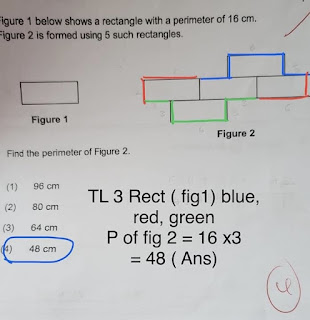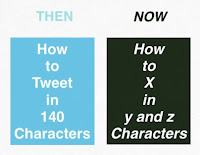https://fb.watch/lTvXKc6VyK/?mibextid=v7YzmG
Does the comedic rant on “Racism in Maths Problem Sums” serve as a “proof” that inequality or racism is rampant in math and math education?
Often times, math educators pose and solve these artificial or contrived word problems without giving much thought to them, especially when they’re oblivious that they might trigger mixed or negative feelings among highly sensitive schoolchildren and parents that belong to certain racial or minority or economically disadvantaged groups.
Math in Multicultural Singapore
It’s no harm nor too late for the Ministry of Education (MOE) to occasionally review their approved textbooks presently used in local schools, which might perceivably promote some form of racial inequality in multiethnic or multicultural Singapore.
Not too long ago, to promote multiculturalism in math education, there was this unofficial or unwritten directive from the MOE for local math teachers and textbook writers to mindfully or multiculturally use people’s or children’s names from different racial groups in their word problems or problem sums. An educational move that would likely be banned and dubbed “woke math” in some political circles or polarized parts of the globe today.
Because Singapore has four official languages (English, Mandarin, Malay, Tamil), math educators are encouraged to permute or vary their choice of names in order not to appear racially prejudiced, especially when the majority of textbook authors have traditionally been Chinese.
In the name of racial or religious harmony, commendable or encouraging as the curricular or political move was then, its implementation wasn’t a walk in the park, because in practice, it’s not a mere change of substituting a Chinese name with a minority or non-Chinese one.
The present trend appears to revert to generic names in math textbooks and assessment titles for reasons unknown to me. Is it part of a grand marketing scheme to internationalizing (or colonizing?) the Singapore math brand to as many countries as possible?
XX, XY, or Others?
Some Chinese first names are used by both males and females; in other instances, it can be tricky to guess the gender by just looking at some Asian or Chinese names—the task doesn’t get any easier if you’re a non-Chinese. In fact, just recently, I needed to Google a Chinese name (in Hanyu Pinyin) to make sure that I don’t mistake one gender for another. Indeed, it’s pretty embarrassing or unacceptable to address a he or she (or he-she) by a Miss or Mr. When in doubt, don’t assume—ask!
For a long time, I thought the name of one of the original math co-writers of the then MOE’s Curriculum Development Institute of Singapore (CDIS) writing team belongs to a certain gender, when I later found out of my mistaken assumption, because in the olden days, certain names were used by both sexes.
Foreign Editions: Pluses & Pitfalls
A similar situation arises when Singapore math textbooks are adopted or adapted for overseas markets. Changing names of living and nonliving things that have both British and American equivalents, or replacing local names or terms like local food or fruit with foreign substitutes that readers elsewhere are familiar with, is a common practice.
Of course, local publishers would also caution math writers to avoid using any Chinese or Asian names if their titles are being tailor-made for a Western audience, or if they don’t want to alienate potential “anti-woke” homeschoolers-customers.
Lesser known or discussed is that math publishers in Singapore have mixed feelings about local authors using their full Asian names, because in their marketing eyes, readers in the US and in the EU would prefer a Western name of the form X Y (with the first name X before the surname Y) rather than an Asian (or traditional Chinese) name of the form Z Y X (where the surname Z precedes the first name Y X) on the cover of a math textbook or supplementary math title.
Western Names Preferred
Many moons ago, I vividly recall a respected experienced publishing manager advising me to use a Western or European name, because my targeted (American) audience might not be receptive to seeing an Asian or Chinese name on the covers of my recreational and problem-solving math titles.
Just as every (additional) equation in a general or pop math book targeted at the lay public might potentially halve its sales, the odds of an Asian math author, who insists on using their real rather than a [Western] pen name, achieving a decent sale in front of their non-white audience are significantly (or unprovenly) reduced. There is this apparently unspoken bias towards nonwhite authors appearing on covers of math titles.
Personally, I’m not sure of the extent of this alleged or perceived discrimination vis-à-vis Asian math authors, but I’ve faith to believe that those who’ve taken a risk to order my wallet-friendly, brain-unfriendly books online, or to buy them in a bricks-and-mortar bookstore, have got their money worth, except for a few one-star haters or sour grapes who revel in posting vitriolic book comments on Amazon.
At the other extreme, it’s also not uncommon for math publishers in Singapore or Asia to conveniently or unethically omit the names of the authors, consultants, or foreign advisors (if they can get away with it), especially if foreign editions exist, or sale of copyrights occur at book fairs, with zero knowledge from the authors (until or unless morally convicted or vindictive editors leaked out the news).
Recently, upon requesting my author’s overdue complimentary copies to one of my foreign editions titles, I discovered that both the author’s name and his American Curriculum Advisor of
Challenging Word Problems (Grade 6) were missing from the title page and imprint page, respectively, which raises serious IP and ethical concerns on the part of the publisher and potential customers and readers.
Without a name on the cover or title page, when previous editions had carried them, it just makes one wonder about the rationale of these unconsulted omissions, when the parties involved in the writing or reviewing of the content were kept in the dark. This only opens up the floodgate to unauthorized use, or helps promote plagiarism or piracy, where the party that often benefits is the lawyer.

The Chinese Advantage (in Singapore)Years ago, a non-Chinese co-author on Singapore’s bar modeling approached me, and wanted me to be his co-author or consultant for one of his upcoming math projects. He’d pay me for being his faux partner, because understandably having a Chinese name associated to a new book or website would add credibility to the project.
Businesswise, I couldn’t disagree with him, and I was praying that he’d find someone else more qualified than me, who wouldn’t mind being his lifelong business buddy.
Indeed, the Singapore math publishing industry is an ethical minefield that few have traversed without compromising their character or reputation. This is one of the oft-unspoken reasons why unlike other developing (and developed) countries that pay lip service to copyrights, Singapore is a first-class economy with a third-class educational publishing industry.
Ethically and multiculturally yours
© Yan Kow Cheong, August 7, 2023.






































